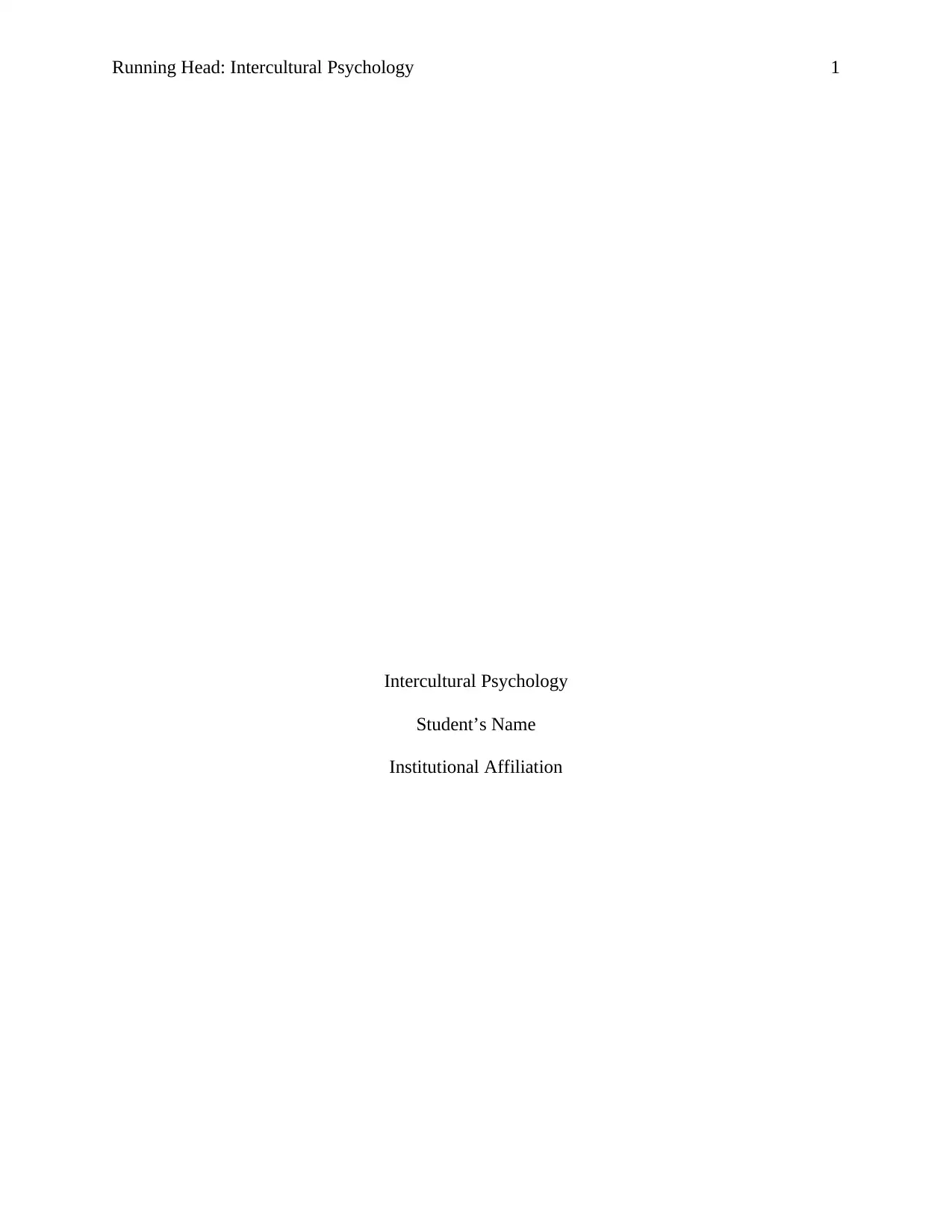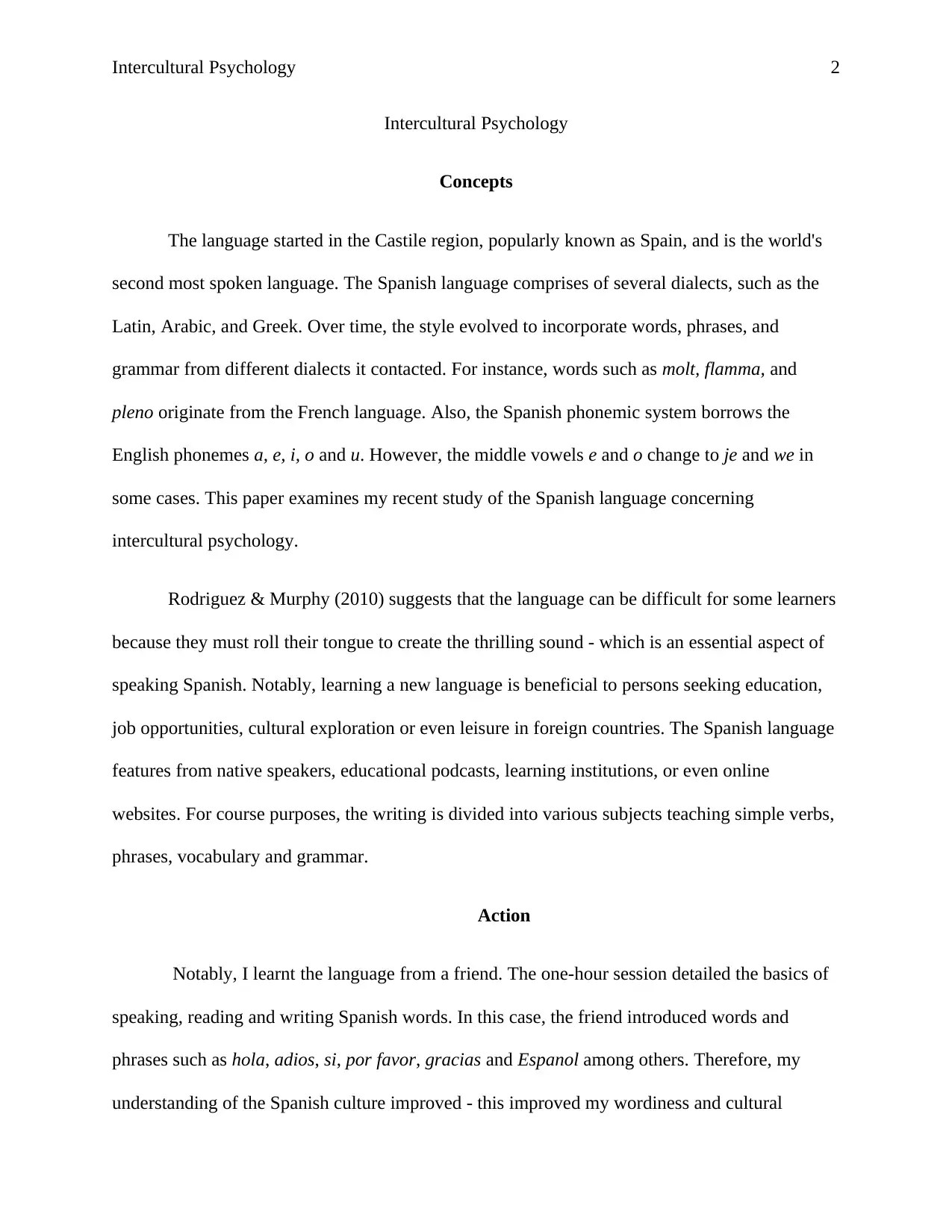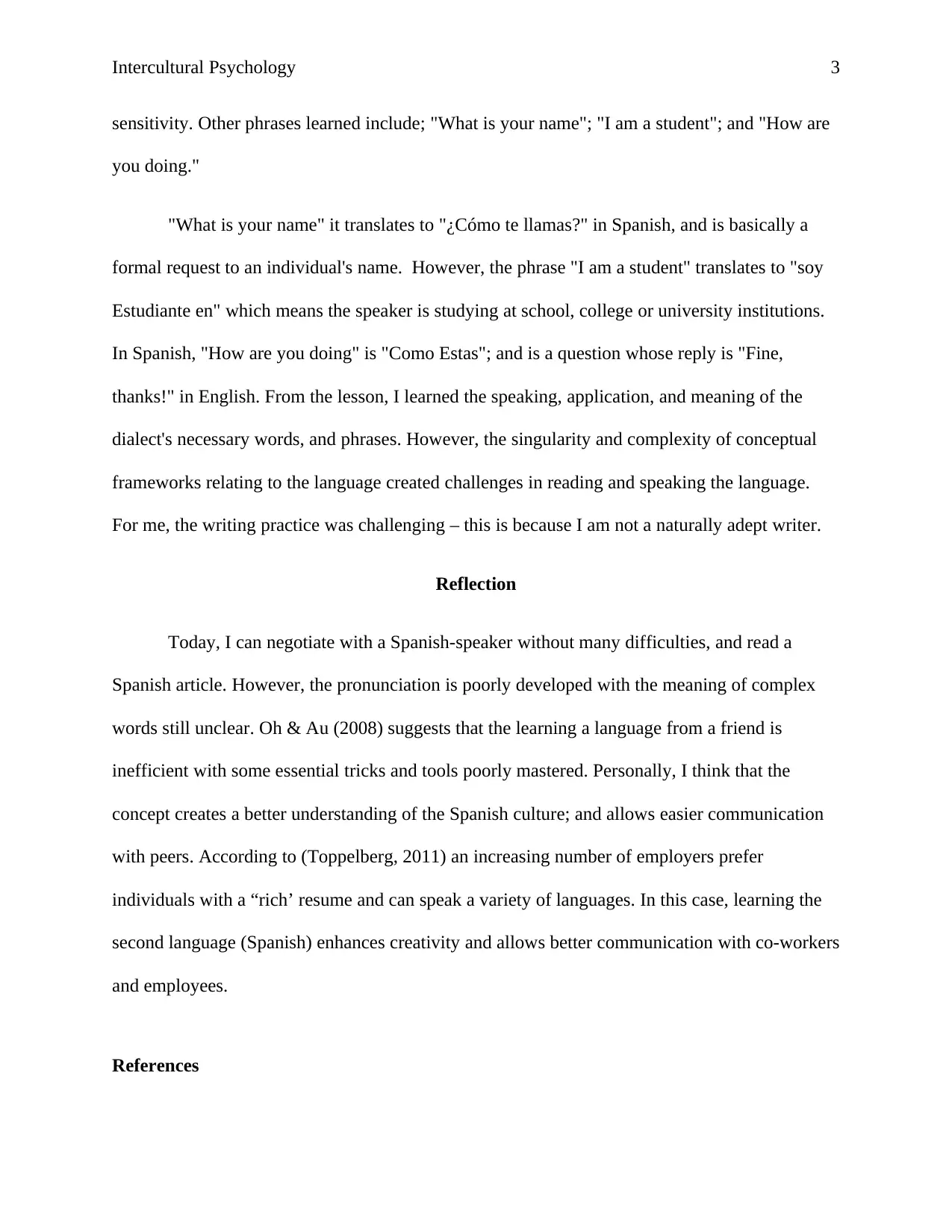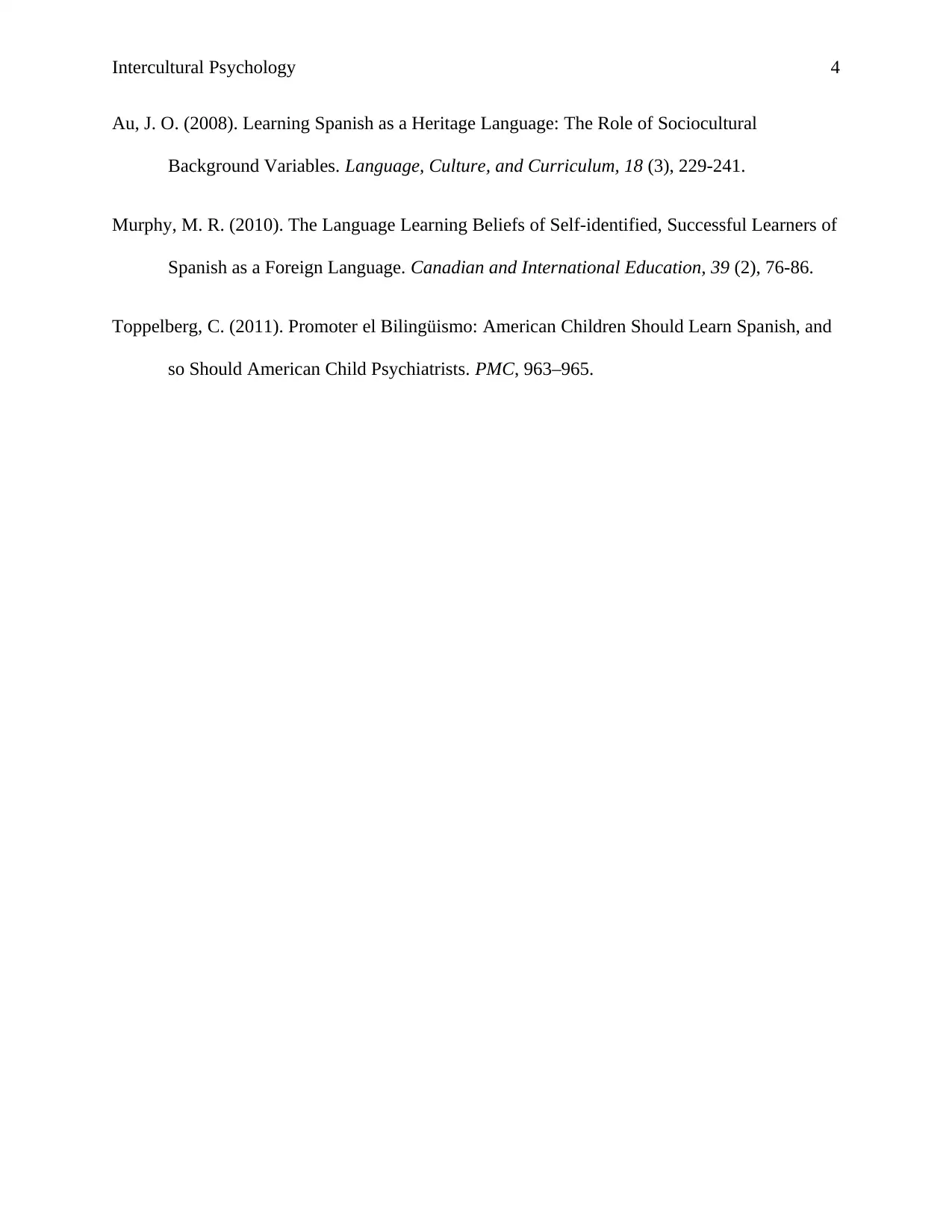Intercultural Psychology: Understanding Spanish Language and Culture
VerifiedAdded on 2023/06/16
|4
|748
|362
Essay
AI Summary
This essay delves into the realm of intercultural psychology through the personal experience of learning the Spanish language. It highlights the origins and evolution of Spanish, incorporating influences from Latin, Arabic, and Greek. The author recounts their initial learning experience, focusing on basic Spanish phrases and their cultural significance, while also addressing the challenges encountered, such as pronunciation and conceptual complexity. The essay reflects on the improvements made in conversational skills and reading comprehension, acknowledging the limitations of learning from a friend. It further discusses the benefits of bilingualism in enhancing creativity and communication in professional settings. Desklib offers a wide array of resources for students, including similar essays and study materials.
1 out of 4











![[object Object]](/_next/static/media/star-bottom.7253800d.svg)